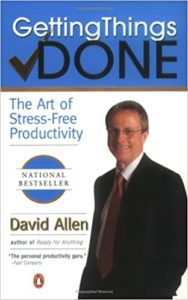Les McKeown dissects the patterns of growth every business owner must analyze to successfully break down barriers and properly handle challenging times.
Every business out there is unique and one of a kind. Nevertheless, all entrepreneurs must monitor and analyze certain patterns of growth to predict their success. In our interview, growth consultant, Les McKeown of Predictable Success LLC, joins me to share the single success roadmap every business must follow to expand and improve. He explains the best strategies in breaking down growth barriers, pumping up during decline times, choosing the right team players, and organizing an effective strategy that’ll lead to big wins. Les explains the qualities of a visionary leader and why every startup needs one if they want to level up.
Listen to the podcast here:
Download the audio file here.
How to Analyze Patterns of Growth In Your Businesses–with Les McKeown
Our guest is Les McKeown. Les is the Founder and CEO of Predictable Success. As a serial entrepreneur, Les has been involved in the launch of more than 40 companies and has served on the board of a number of charities and not-for-profits. Struck by the similarity of issues faced by all growing organizations, Les began to codify his understanding of the repeating patterns of growth, publishing his Wall Street Journal and USA Today Bestseller Predictable Success: Getting Your Organization On the Growth Track and Keeping It There.
In our interview, Les and I discussed the importance of knowing that there are patterns to growth and keeping your business plateaued. I know a lot of you reading are thinking, “My business is different. I am different. My industry is different.” Les is here to share with you that it’s not. The patterns of growth and how to codify that goes across every industry.
Pay attention to how Les goes through the different pieces of advice he has for a business owner that hits a plateau and how to get out of it. At the same time, he shares with us from his book all the stages of business growth and how you need to think and do differently on all those stages. This was a great interview and I encourage you to read until the end. Without further ado, here is my interview.
—
Les, thank you so much for joining me on the show.
It’s great to be here, Meny.
We started years ago and it started with my network of people I have known in the industry. I said, “Now that I have a following and people are reading this every single week, let me go out there, and find thought leaders and experts.” It came to a point where a lot of those people are coming through connections and people are reaching out to us as well. It broadens my knowledge and network.
Whenever I feel any of those people come to mind where the network could appreciate the no-nonsense advice, I said, “Bring him on. Let’s have a healthy, good conversation.” For our readers, give us a little bit of the backstory. What gave you the information that you are able to have at your fingertips to educate our readers? Tell us as long or short as you want.
First things first, I’m not originally from these parts although I’m a US citizen. I live up in Maryland on the Chesapeake Bay. I have been here for years. I’m originally from the UK and grew up in Belfast, Northern Ireland. I was a weird kid. I was very interested and intrigued by the business. Every time my dad would go out to work, I would ask him dumb questions about how his office life was. My very first mentor gave me a good piece of advice. He said, “If you are interested in business, either go be an accountant or an attorney.” I flipped a coin and went off, and became a CPA or the British equivalent, a chartered accountant.
I didn’t have any interest in filing people’s taxes. I took the qualification because I was fascinated by business. As soon as I qualified, I put my shingle out, started my practice, and ridiculously began consulting with people. Advising them at 22 years of age with no experience is ridiculous. I was trying to help people grow their businesses. Fortunately, many people were kind enough to let me work with them from an early perspective. At that time, there was a massive push on entrepreneurship in the UK. Back then, we were essentially a branch economy of the US and South Korea. If LG, Ford or General Motors caught a cold, we would lose 15,000 jobs and leads.
The UK government poured an enormous amount of incentives and money into startups. I’ve got a reputation pretty early on for being the go-to person in Northern Ireland to help people start up their businesses. I was writing business plans, taking them buying, helping them get a partner if they needed one, and thinking through what they might do and what their product or service idea would be. Long story short, people started eventually to ask me if I would join them rather than advising them and become an interim CEO or a partner with them.

Over the course of ten years, I’ve got to cherry-pick 6 to 8 new startups every year. With other people, I helped launch over 30 new ventures, and some of them were not-for-profits before I was 35. Even a dumb Irishman, and that’s me, begin to see some recurring patterns when they do something that often. I started to write these patterns down of early-stage success and failure. I have two very public failures of those businesses I started and learned a lot from those. In the middle of my career, another fellow serial entrepreneur told me that he had been asked to start an incubation center.
We didn’t have that terminology back then. He and I started one of the first incubation centers in the world. It was in the mid to late ‘80s. It was an out-of-the-park success. We would bring people in. It was a night school. We would teach people 2 nights a week for 6 months the fundamentals of launching successful new ventures and have a little shark-type thing at the end, where they would meet potential investors, banks, funders, and so forth. It was a massive success. We had economic development agencies from all around the world come to ask us to replicate that model.
I ended up with a business with that partner with about 110 people and 13 offices worldwide, helping folks get to the 2nd and 3rd stage of growth. I began to realize I was seeing a holistic pattern from birth to death of all organizations. I spent about a decade codifying that. I call it Predictable Success. My book Predictable Success came out in 2010. It’s a Wall Street Journal and USA Today Bestseller. That’s what I do. I teach this model of growth, which is essentially simply what I learned from all of that startup frenzy and helping people in the middle of my career with later stages of growth.
This is interesting because sometimes we find thought leaders that we are only coaching. Sometimes the whole success came from running their business. You have the mix of both plus so many different types of businesses in your experience. I appreciate when you say codify because it is a pattern. It’s not across one sector or type of business that you pick that up, which I want to dive deeper into. You and I speak to business owners at any given time. They say, “My business is different.”
That’s always the excuse when there is chaos, “You don’t understand my people, industry, and everything else.” I like and appreciate the words when you said, “The patterns of growth,” because these are usually very similar. The tactics and stuff might be different. I want you to speak to our readers a little more about what you call patterns of growth. What are those different patterns?
The majority of the folks who come to me already know what it is that I do. I’ve got a fair degree of filtering with them. When I meet folks and I’m talking to them and they are asking me out of interest what I do, that’s one of the first things that most folks say, “My business is different.” The front truth is it’s not or it’s not anything like as different as you think it is. About 80% to 85% of all growth issues that any leader faces, whether in a for-profit or not-for-profit, are immediately replicable in any industry or market. Any group of two or more people trying to achieve common goals hit the same growth barriers.
I didn’t invent any of this or make any of that up. All I did was codify what I saw and spend a lot of time finding the right terminology to use. Essentially, what happens is every business goes through an arc of seven stages. There are 3 growth stages, 1 peak stage, which I call Predictable Success, and 3 decline stages. The first stage is Early Struggle. All of our readers will be familiar with it. That’s the first typically gross exaggeration. There are about three years trying to get traction in the startup stage or find a profitable, sustainable market.
Eighty percent of all new ventures fail in the first three years. If you make it through, you get into the second stage, which is the first growth stage. I give it a highly technical name. I call that stage Fun because that’s what it is. It’s fun. The key reason it’s fun is it’s not an early struggle anymore. We are not waking up with an existential threat to our existence every day. We’ve got a profitable market. The biggest growth barrier starts right there. In the Fun stage, we think, “Why wouldn’t we? This is what we started our business to do.” We think this is it.
[bctt tweet=”Every business needs a visionary leader. Look for someone who sees the big picture, a risk-taker, and gets really irritated with every detail. ” username=””]
Our mindset is, “If I’m going to step out and start something, I’m going to have a shaky initial stage.” The early struggle issue is not a surprise to anybody, but then they get into the fun and think, “This is how it’s meant to be.” We sound crazy. We are very evangelical. We say yes to everything, improvise, and somehow ship on time. It’s great fun. We have our issues. Every Friday night, we are righteously exhausted or having beer buffs and pizza parties because we don’t have an HR department that tells us not to. We think that we have arrived.
The complexity that our success and fun cause mean we trip into the third stage, which I call Whitewater. Whitewater is the point where simply that our growth and success have made things too complex for us to say yes, and then make it up. It feels like we have completely lost control and somehow, we have turned stupid. We had a great business, it was going well, and now we are stumbling over ourselves. All that’s happening is we’ve got to put systems and processes in place. We will have enough to keep us out of jail up until this point.
We’ve got to put enterprise-wise. We start using phrases like enterprise-wide. If we do that and put the right systems and processes in place, we get to that peak stage, which I call Predictable Success. The key distinction between predictable success and fun is, in fun, we can grow but there is always a top. If you put the right systems and processes in place during the Whitewater phase, you can then scale and do a J-curve. You can put your foot in the accelerator and the car goes forward. If you do the right things, you can stand in Predictable Success indefinitely.
The reality is very quickly what happens in most organizations is, “We did a hard thing. We put those systems and processes in place. It was great but look what it delivered. Let’s have some more.” We put too many systems and processes in place and we begin on the decline stage. We have a stage I call Treadmill. It’s a little bit too much about compliance. A potential new customer has to fill in thirteen fields in some online form. If we don’t correct at that point, we will fall into what I call the Big Rut, which is where we become incredibly bureaucratic.
We are probably quite well off because we spent a lot of years in Predictable Success. Ultimately, we will hit the final stage, which I call Death Rattle. To make the point, 80% to 85% of all growth issues or barriers are caused by a leader taking 1 work in 1 stage and failing to recognize that it will not get us through this next stage. The hard synopsis in fun is the way we lead becomes a barrier to growth when we hit Whitewater. The majority of leaders’ challenges are the 4 inches between their ears. It’s the behavioral approach that will unlock growth.
The line that I use a lot is, “It’s easy to grow a company. It’s managing the growth, which is the hard part.” If you don’t get to a stage where you know that you are moving stages and behaving the same way as a startup or when you were the salesperson or marketing guy, all of a sudden, there’s the same approach you are doing when you have 10 or 5 employees. You are not scaling because everybody is tripping over each other versus putting this one point that you are going to the stage where you need to have systems in place, “Who is responsible?”
That’s where we become predictable. From your experience, we see so many business owners that hit that plateau either in revenue, size or time, “I’m 2 or 5 years in and I hit the plateau.” What would you say? What is usually the cause of that plateau? What is the next best step for a leader to do in their company when they do see a pattern of a plateau?

It’s all about the choreography and timing of the right people. When I say the right people, I don’t necessarily mean the right individuals. I mean the right leadership style. Let me be very precise about this. It’s like a dance. My mother was an amateur ballroom dancing champion three years in a row. She taught me a lot about dancing. The choreography of the dance is what we are looking at here. Here is what happens. The vast majority of successful founder-owners are 1 of 4 styles. They are what I call a visionary leader. A visionary leader is someone who sees the big picture, is a risk-taker, thinks visually but gets irritated with detail.
They can do it if they have to but if they are forced to adhere to detail, they begin to go crazy. They like germinating the big ideas. Successful founder-owners are typically visionaries. What most successful visionary founder-owners recognize, whether they knew this terminology or not, is that intuitively, they need somebody to help them do the punch list and dirty fingernail work of realizing their vision. They can do some of it but they need somebody else to help them. Successful Visionaries go out and find what I call an operator. An operator is a righthand man or woman.
It’s the person who comes in on Monday morning and listens to the boss. They are not interested in the big vision thing. They get uncomfortable with strategic planning but they get the Visionary leader’s vision and say, “I will make that happen. Don’t watch because it’s not going to be pretty.” Operators go through breeze block walls to get things done. They are doers. They make things happen. That visionary-operator combination is what bursts you out of early struggle, finds the profitable, sustainable market, and gets you into that fun stage. There are two elements of the choreography that are important.
One is many owners get stuck at the early onstage, and in the service industry, that means less than $500,000 to $600,000. They never get to the $1 million-dollar mark. They are personally trying to do the visionary and operator roles together. They get stuck in what I call the artisan cycle, which means they are being visionary to go out and sell their product or service. In the early struggle, selling is a visionary activity. Later, it becomes an operator activity. When nobody knows you, you’ve got to go out and stick to yourself to get your business.
You’ve got to have a marketing edge and say, “Nobody has ever heard of you.” You are going to be the one out there. If you are the only one and you are doing visionary and operator, you’ve got this bit of business. You’ve got to go back to the office and be the operator to deliver. While you are doing that, you are not selling. You deliver it, get the money, and then have no more revenues. You are going to go out and sell. You end up going visionary to an operator in a circle. You are never getting bigger. You’ve got to have a visionary and at least one if not more operator helping you. Most visionaries see that intuitively.
The two other parts of the dance are the visionary and operator on their own can take the business through fun. They will grow up through the fun stage. That’s all you need. When you have Whitewater, the biggest challenge behaviorally comes from founder-owners. For the first time in leadership, you need a style that I call the Processor. Those systems and processes won’t put themselves in place on their own. Usually, the visionary may understand that the need for it may even possibly be quite capable of putting them together but adhering to them, there’s not a chance.
Visionaries hate being constrained by systems and processes. Most people who leave employment to start their own business do so not because of the money. The money is a measuring stick. They do so because they want independence and freedom. Those systems and processes become highly problematic. Operators loath being told to fill in spreadsheets, slow down, measure twice and cut once. They loath that. They want to go and make things happen. You need a process or someone whose mindset is putting things and processes in place to institute the processes and hold the visionary and operators accountable.
[bctt tweet=”Most people who leave employment to start their own business do so not because of the money but because they want independence and freedom.” username=””]
The vast majority of leadership teams never make that transition. The visionary and operators yearn to go back to fun and cast off the yoke of those restricting systems and processes. They do that, go back, and get stuck there. That’s why they have that barrier that you talked about. It’s not being able to incorporate the processor role.
You mentioned a couple of times the visionary, leader, and founder-owner. What if the entrepreneur starts off a small business and doesn’t have that visionary mindset. Could that be complemented with another person in the company? Is that something that could grow on you?
The whole franchise industry was made for non-visionary founders. If you are not a visionary, you want to go find yourself a good franchise or license because what has happened in essence is somebody else has come up with the picture for you that put it all together in a box and you can go and implement it. It tends to be self-filtering because true visionaries won’t go buy a franchise. They will start their franchise but they won’t go buy one because they don’t want that constraint. They’ve got the image for themselves. One solution is to take a franchise or license.
Another one is to partner up with somebody who is a visionary. Sometimes, our life partner or spouse is the person who got the vision and is pushing us towards doing that. Unfortunately, in the majority of cases, and sadly, it happens all too often at economic highs and lows, people get pushed into starting a new venture without that visionary gene. They are not going to succeed. That is why failure rates go up at the peak and the bottom of economic troughs. Whenever we have a bubble, it pushes a lot of people to think they can jump. The risk seems less, “We’ve got such an economic fervor going on at the moment. It seems like I couldn’t fail but I will succeed.”
A lot of people start businesses at that point. In an economic trough, a lot of folks start a new venture because they are backed into a corner and have no other option but they don’t have the gene. I would make one thing clear. When I talk about a visionary founder, I’m not talking about somebody at the top of a mountain who thinks guru-like and comes up with wisdom. That might be part of their makeup. Essentially, we are talking about somebody who thinks visually, looks for the long-term, and wants to make a difference in the world, whether it’s in their family, community, market or industry. It’s pretty non-risk averse. That’s what the component elements of the visionary are.
When you sometimes speak to the entrepreneurs, sometimes you could see those reckless entrepreneurs and they use this as an excuse, “The reason why I lost $300,000 on a venture is that this is what entrepreneurs do.” We look at opportunities and try to jump into markets but I call that a reckless entrepreneur.
I talk about this a lot in my fourth book, Do Scale. A lot of that happens in tech and is perpetrated by what I call early struggle addicts. There are people who aren’t true business people. What they are fixated on is the early struggle phase. All of the fundraising, mezzanine, finance, leverage, pivoting, and all the jargon in the world get their juices going and they love that world. What they will do at an extreme is to self-harm their venture to prevent it from getting to that fun stage. In other words, to prevent it from having validity in its own right to stay in that early struggle stage. We could get off on a target about this alone.
One of the disservices that many of us have done over the years is to ridiculously glorify the startup phase. We talk about the startup phase of a business as if it’s some Holy Grail. There is only one valid strategy for a startup. Stop being one. That is the only valid strategy because if you stay as a startup too long, you will die. Do we want to take some of the mindset of a scrappy, flexible startup? Yes, but I say to startup founders all the time, “If you don’t give up on using that phrase and terminology as a badge of honor and think of it as something you’ve got to get out of as soon as possible, you are going to lose your business.” Sadly, particularly in tech, it happens way too often.

I want to dive in a little bit more on the Predictable Success and parts of your book. At which point does a business owner know that this is a viable business and, “I’m growing this,” versus it’s not worth the effort that’s being put into a business? From your past, you had some failures and stuff that you let go of. For our readers, this is sometimes a business owner’s struggle. They had a nice run for 5 to 10 years but is this worth the effort that’s being put in?
The touchstone or the single thing that tells you that you are in fun, which is the first of the viable stages as opposed to early struggle, is that you have something I defined very clearly in the book with three words, a profitable, sustainable market. You need all 3, not just 2 of the 3. You’ve got to have a profitable, sustainable market. Despite the terminology, this applies to not-for-profits as well. About 45% of all the work I do is with faith-based or cause-based organizations. They get a little squeamish when talking about market and profitability so we use different terminology.
The underpinning reality of having an economic surplus that’s sustainable is the touchstone of knowing that you are out of early struggle. I will share a specific metric on that. We’ve got to look at those three things. It’s got to be profitable. If it’s not profitable, you are not getting an economic surplus. It doesn’t matter if it’s a sustainable market if you are making a loss. It’s guaranteeing that you are going to go bust. It’s got to be sustainable.
[bctt tweet=”There’s only one valid strategy for a startup: stop being one.” username=””]
You could have a profitable market but if it’s the Rubik’s cube of this year and it’s not sustainable, then you get a little false stone where you think you’ve got a business and you don’t. It was just something you were building for a period of time. The third thing, particularly in service businesses, that can be a little hard to get a handle on is, “Have you found your market? Do you happen to have a few clients or customers?” That’s a different thing.
This sometimes goes back to our known visionary starting a business. Sometimes it’s one of our operators or even a processor. They get lured into starting their own thing because one or more of their clients, while they are in employment, said something along the lines of, “If you ever went out on your own as a haberdasher, I would buy all of my clothing from you.” They start something. They think they’ve got a profitable, sustainable market but they’ve just got a profitable, unsustainable set of clients. You’ve got to have a profitable, sustainable market. I share this with people all the time. I was a practicing accountant for many years.
You do not need the CPA level understanding but the one document you’ve got to learn to understand intensively is cashflow. What’s going to lead you out of early struggle is by paying attention to your cashflow. I tell everybody, “You produce a cashflow and update it every Friday. Pick another day if you want.” I still do my business and personal cashflow every Friday morning and update it every single week. When you look at it and don’t put $0.1 of projected income, all you put in is what you have invoiced.
You put all of your expenses in so that you are staring down the whole. Every Friday morning, you stare that sucker down. When you get to the point where you are seeing consistently, if you are in a service business, about 3, 4 or 5 months of positive cashflow, or if you are in a manufacturing business and you can see 9 months to 1 year of sustainable, positive cashflow, then you have done it. You’ve got out of early struggle and into fun.
We are towards the end of this whole pandemic that the world suffered. Have you seen anything change in the way you have written Predictable Success or how companies operated? We can learn some nuances of how to go about it when things like the unexpected happen.
No is the answer. I can be pretty definite about that for two specific reasons. One is when I started to write Predictable Success, a good friend of mine, David Allen, and many of our readers will know David, wrote a book called Getting Things Done. It’s already the best personal productivity book ever written. It has sold more than two million copies and is still selling. Getting Things Done has a message of showing up, getting through a day, and revolutionizing life. I loved the book. I reached out to David and got to know him.
He became a client of mine eventually and we became friends. The most impactful piece of advice he ever gave me was, “If you are going to bother writing this book, make sure you don’t put anything in it that ages it unless you want to write it all over again.” I went back and looked at Getting Things Done. There wasn’t a single reference that could date that to any point in time. He worked hard at not referring to whatever the current business examples or great productivity were of tools that would date the thing. Predictable Success is the same. I deliberately boiled this down to the problems and issues that we are going to be facing forever as groups of people trying to achieve common goals.
I didn’t put references in, exhibitors, and all of that. On my website and blog, we talk about tons of things. Here is the artisan cycle, for example. One of the things I’m most proud of is, observationally. I believe I have distilled eternal patterns in people trying to grow organizations. A lot of things going on have been altered through COVID and all of the associated and secondary impacts of that. The biggest thing that I have seen is a huge acceleration to digital but none of that changes any of the underlying presets.

What are you working on? How could people find out more about what you do?
Come to PredictableSuccess.com. Everything is there.
Let’s close with the four rapid-fire questions. Number one, what’s a book that changed your life?
Getting Things Done.
Number two, what’s a piece of advice you’ve got that you will never forget?
If it’s not fatal, it’s merely an inconvenience.
Number three, is there anything you wish you could go back and do differently?
I can’t think of a single thing but that’s not to say there isn’t one.
The fourth and last final question, what’s still on your bucket list to achieve?
I would like a 2nd and 3rd grandchild but that’s a little bit outside my control.
Thank you so much for joining us. I know your time is valuable, that is why in the name of our readers, who will forever be grateful for sharing some of your time with us.
Thank you, Meny.
It was our pleasure.
Important Links:
- Predictable Success
- Predictable Success: Getting Your Organization on the Growth Track and Keeping It There
- Do Scale
- Getting Things Done
- https://www.Linkedin.com/groups/3970027
About Les McKeown









